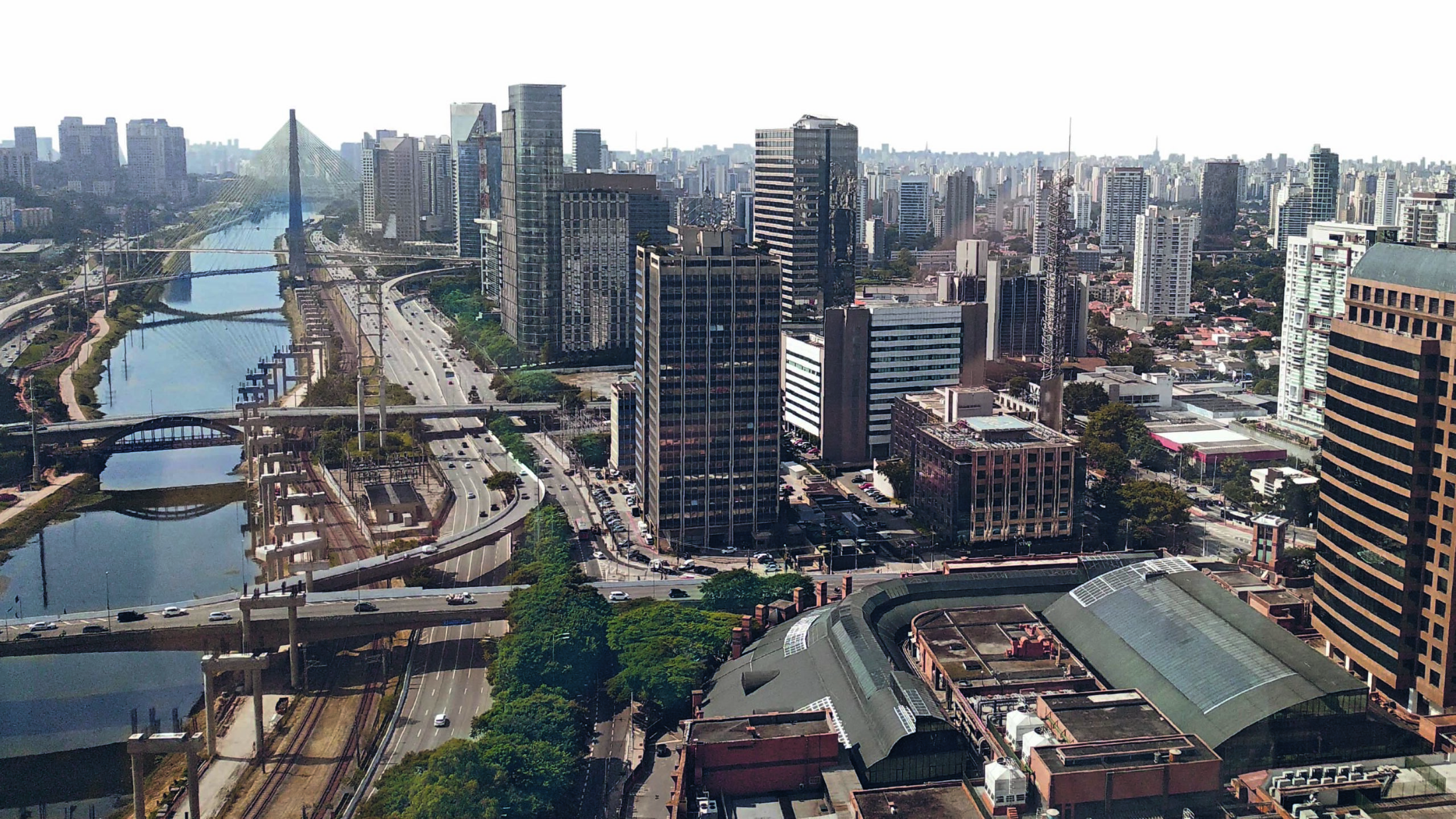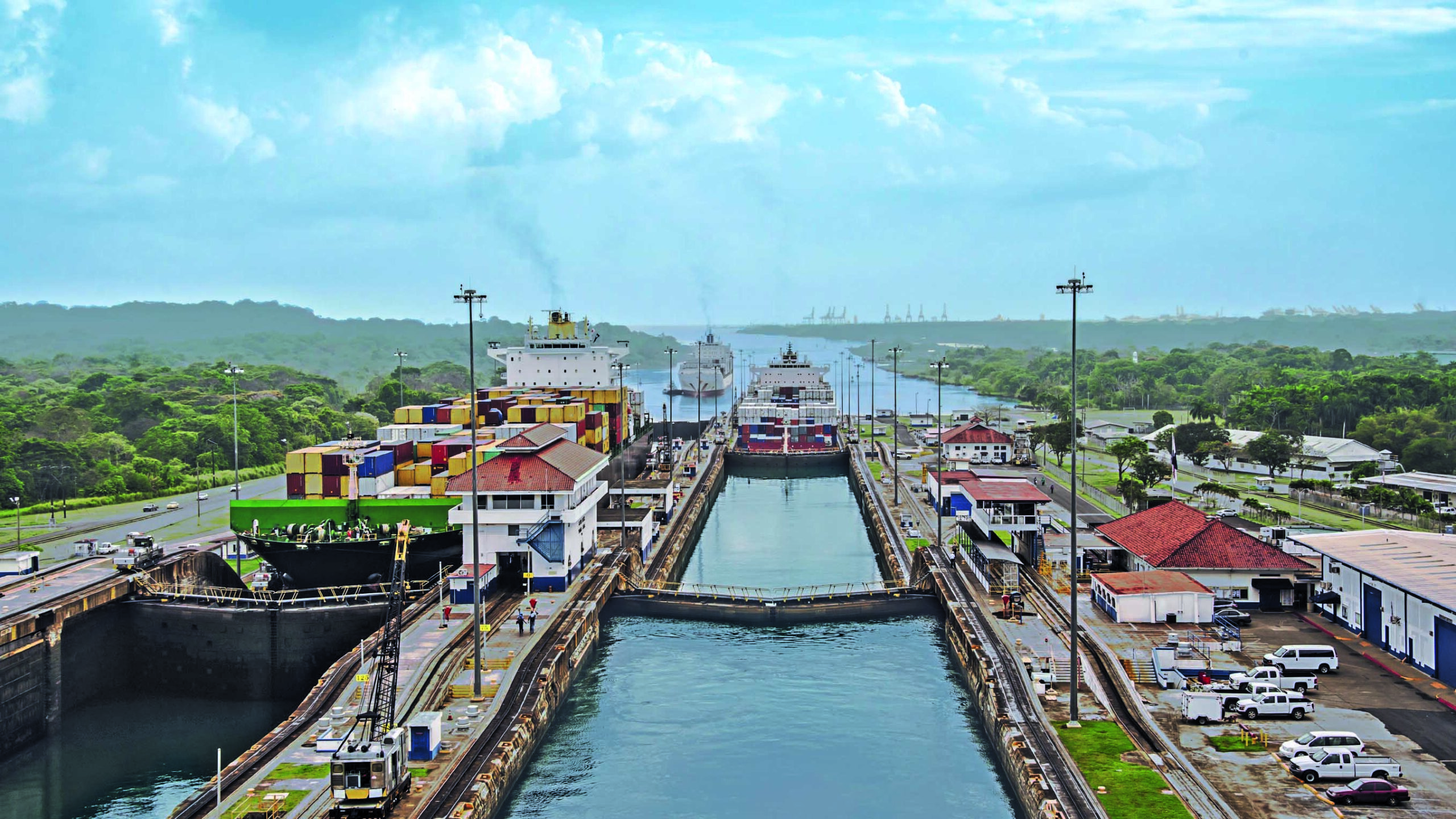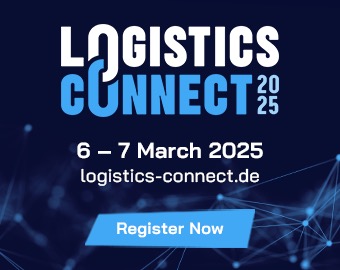Since the beginning of the year, the pandemic has been causing considerable disruption to global logistics chains to and from Latin America. Experts are watching with concern, but nevertheless see signs of long-term growth potential in the region.
Photos: CrazyRohingya/shutterstock, Germany Trade & Invest
Other photos: Hapag-Lloyd, renan araujo/unsplash, Deutsch-Brasilianische Industrie- und Handelskammer, J. Müller (2), Leschaco (2), artes2franco/Pixabay
Europe and Latin America enjoy extensive and long-term trade relations. A look at the exact figures, however, shows that the region does not come close to the economic significance that the US, China, or France have for Germany. Last year, exports to Latin America accounted for only 2.6 percent of German exports. In 2019 no Latin American country was among the top twenty export destinations for the German economy. According to the Federal Statistical Office (Destatis), the biggest buyer of German products in the region was Mexico (22nd place), followed by Brazil (27th), Chile (50th), Argentina (53rd), Colombia (56th) and Peru (70th). The situation is similar for imports: Mexico (30) and Brazil (32) are the dominant Latin American supplier countries. Peru (60), Chile (62), Argentina (63) and Colombia (71) follow at a considerable distance. In view of these figures, Jenny Eberhardt, senior manager for America at the economic development agency Germany Trade & Invest (GTAI), says that “Latin America’s importance as a trading partner has remained at a low level in the recent past. But the volume of foreign trade between Germany and the Latin American countries has – with a few exceptions – risen slightly over the past few years.”
A market of over 650m consumers
Against this background, GTAI has identified machinery, automotive and automotive parts and chemical products as the most important German exports to Latin America (see pages 4 and 5). In return, it is mainly raw materials and foodstuffs that are imported into Germany. “Some Latin American countries are among the leading producers of raw materials and agricultural products worldwide, such as Chile in the case of copper, Argentina and Brazil in the case of soy and beef, Brazil and Colombia in the case of coffee and Mexico in the case of avocados,” says Eberhardt. She also mentions the world’s largest lithium deposits in the Argentina-Bolivia-Chile triangle. The light metal found there is especially important for battery production.

“São Paulo is the world’s largest German industrial site outside of Germany.”
Jenny Eberhardt, senior manager for America at Germany Trade & Invest (GTAI)
Different colours, different cargo: In its orange containers Hapag-Lloyd transports dry goods and in its white containers temperature-sensitive goods such as fruit and vegetables, meat and fish, and medicines and blood plasma.
The fact that Latin America is of great importance to Germany – despite the relatively low absolute figures – is shown by the fact that numerous German companies, including major automobile manufacturers, have been present in the region for decades. “São Paulo is the world’s largest German industrial location outside Germany. Over one thousand German companies are represented there,” says Eberhardt. “In addition, Latin America is a large market with over 650 million people and a young population with high levels of consumerism. This makes the region highly attractive.” For comparison, the EU has 446 million inhabitants.
Among the companies for whom Latin America plays an important role are shipping company Hapag-Lloyd, logistics service provider Leschaco and port services provider J. MÜLLER. Hapag-Lloyd currently operates more than twenty liner services to the region. “Our customers and the products we transport are as diverse as the individual countries in Latin America,” says Andres Kulka, managing director of Latin America at Hapag-Lloyd. The dry market mainly transports raw materials such as copper, cellulose and other wood products, but also chemicals, car parts and electronics. The reefer containers, on the other hand, are mainly filled with cherries, bananas, pineapples, grapes, apples and meat. “With a 40 percent share of our total reefer business, the region is of particular importance to us,” Kulka said.
He describes the current development in Latin America as “very challenging” due to Covid-19. In principle, he said, the pandemic could hamper economic growth up to 2021. “Nevertheless we believe in the region and are cautiously optimistic, especially with regard to our reefer business,” says Kulka. However, in both the reefer and dry segments, global trade fluctuations mean that there are considerable imbalances in empty container flows. “Germany has a trade surplus with all its partners in Latin America. This means that more products and containers are exported to the region than are imported from there. For us as a carrier, it is therefore crucial to get our containers to where they are needed as quickly as possible. So far we have been very successful in doing this.”
Major construction site infrastcture
The firm of J. MÜLLER is also active in Latin America, mainly in the areas of agricultural and forestry products, for which Brazil is considered the world’s main exporter and the metropolis of São Paulo is an important business location. Sebastian Behrendt is J. MÜLLER’s representative in São Paulo. “In South American business culture great emphasis is placed on personal contact, so it’s important to have a native speaker on site”, says Behrendt. With a view to the whole of Latin America, he notes that “the countries in the region are still undoubtedly developing, with a strong concentration of their economies in metropolitan areas.” South America also suffers from a lack of infrastructure, he says. “In Brazil, around 70 percent of all transportation is by road, despite the fact that this vast country would be better suited for rail or coastal or inland waterway transport.”

“For us, it’s vital to get our containers quickly to where they are needed.”
Andres Kulka, managing director for Latin America at Hapag-Lloyd

São Paulo is the largest city in Brazil. More than twelve million people live in its catchment area. The city is regarded as Brazil’s economic, financial and cultural centre and is the world’s largest German industrial site outside Germany.
Behrendt believes additional instability is caused by politics. Countries like Argentina, Brazil and Chile have for the past thirty years enjoyed economic growth, political stability and international investment, but are now experiencing increased unrest, whether that’s due to corruption scandals, economic crises or protests for social justice. “The maturity of the institutions there is put to the test every day. Almost every country is still gathering the experience it needs to introduce necessary reforms and to avoid regular economic and social crises. If they succeed, it will make them more attractive for international investors.”
All in all, however, Behrendt thinks that Latin America is “very important for the global industry” and thus has great growth potential. But he sounds a note of caution. “In the near future, the countries there will realise that economic growth cannot be based on exports of raw materials and consumer goods in the long term, but that they have to invest in technologies, sustainable energy sources and major infrastructure projects – i.e. in rail networks, ports and waterways. Because that is where the real potential for the region’s true development lies.”
Free trade agreement as catalyst
Another company that has had offices in Brazil and Mexico for decades is Leschaco. The logistics company has its own organisation in Chile and is present in almost all countries within the region in the form of partnerships with agency reps. Their focus is on international air and sea freight transportation. Leschaco also offers local services to provide customers with a seamless end-to-end logistics chain. These include activities in the field of customs clearance, initial and final transport within country and storage and interim storage for goods. “Thanks to this service package we’ve have been able to achieve above-average growth rates in Latin America for many years, although the general economic situation there has not always been the best,” says Martin Sack, regional head for the Americas at Leschaco. “This year, we have of course affected by the pandemic and are seeing a decline in business compared to the previous year.” Nevertheless Leschaco remains optimistic about developments in the region. The Bremen-based company is even considering further investment in the near future to expand the company’s network in Latin America.
Logistics Pilot
The current print edition - request it now free of charge.

“Almost every country in Latin America is still gathering the experience it needs to introduce necessary reforms.“
Sebastian Behrendt, J. MÜLLER’s agent in São Paulo
Thanks to J. MÜLLER, agricultural and forestry products make their way from Brake to all parts of Latin America, and from there to Lower Saxony.
Like his colleagues at Hapag-Lloyd and J. MÜLLER, Sack also sees a possible catalyst in the planned free trade agreement between the EU and the Mercorsur countries (Argentina, Brazil, Paraguay and Uruguay). “This would lead to an enormous increase in trade in goods between Europe and the Mercosur region. The economy and companies on both sides would benefit, including the logistics sector.” But there is still a long way to go before this is implemented. This is because the agreement is currently undergoing formal legal review and will only be submitted to the participating states for consideration afterwards. “I don’t expect the agreement to come into force before 2021, and possibly not until 2022,” says Sack.
Protectionist tendencies
Jenny Eberhardt of GTAI also believes that the signing of the free trade agreement would further strengthen trade relations between Germany and Latin America. Germany’s automotive, chemical and mechanical engineering industries in particular could benefit from customs advantages over their global competitors. But there’s no guarantee an agreement will be reached in the near future. “Due to the pandemic, the trade agreement is not currently at the top of the priority list for many countries in Latin America. And the pandemic tends to encourage protectionist tendencies,” says Eberhardt. But the past few months have also shown that many Latin American companies are able to react to new conditions faster and more creatively than many had expected. “From start-ups to global players, the crisis has forced them to become more efficient and introduce new technologies more quickly. The supply chains of many companies are currently experiencing a huge increase in efficiency and digitalisation. Those that do not actively address the issue of digitalisation now run the risk of not surviving. But this also opens up opportunities for new products and business models.”
At the same time, Eberhardt also points out that the economic prospects for Latin America are anything but rosy at the moment. “Many countries have been hit hard by the pandemic and have not yet reached the peak of the crisis. According to the IMF, this year alone the region’s GDP is expected to fall by more than nine percent. The UN Economic Commission for Latin America and the Caribbean (CEPAL) expects that in the second half of 2020, around 2.7 million companies in Latin America will have to close and 8.5 million jobs will be lost.” In light of these figures, it’s tempting to view Latin America more as a problem child than as a star performer. On the other hand, the region has already proven on several occasions in the past that it is capable of overcoming crises. (bre)

“The FTA would significantly increase trade between Europe and the Mercosur region.”
Martin Sack, regional head Americas at Leschaco
Tank containers are regarded as a safe, flexible and universal transport solution for liquids of all kinds. Leschaco uses them for its overseas logistics.
“An indicator of world trade.”
The 81.6km Panama Canal, which connects the Atlantic to the Pacific, is one of the most important waterways in the world.
According to the Panama Canal Authority (ACP), last year more than 252 million tonnes of cargo passed through the Canal‘s locks in a total of 12,291 transits. The number of transits in the past three years has constantly been over 12,000 and cargo volumes have amounted to over 240 million tonnes.
“The Panama Canal is not only an important waterway that saves shipping companies the long journey around Cape Horn or through the Strait of Magellan, but also an important indicator of economic development in the world and in Latin America,” says Mark Heinzel, head of the North and Latin America at the Association of German Chambers of Industry and Commerce. Martin Sack, regional head of the Americas at Leschaco, adds that “the Panama Canal simplifies and accelerates global trade. Latin America is one of the biggest beneficiaries of that. Following the completion of the expansion in 2016, post-Panamax ships will now be able to cross the Canal, thus connecting South America, the Caribbean and the east coast of the USA with Asia even more effectively.” Currently about one third of the volume shipped through the Canal (180 million tonnes) is on the trade route between the eastern USA and Asia. Goods with origin or destination in Europe account for 13 percent of the total cargo volume. After a slight increase in revenues from transits in the first half of 2020, there have been signs in recent months of a decline in the number of transits and the volumes transported, and not only because of the pandemic.
“Even before the pandemic, it was already apparent that the trade dispute between the US and China would reduce the flow of goods,” says Heinzel. This would be a heavy blow for Panama. The ACP collected around US$3.1bn last year in transit fees, which is five percent of the country‘s GDP. But despite this development, Sack is not worried. “The Panama Canal will only become more important for Latin America in the future, not less.” (bre)
A typical journey through the Panama Canal takes between eight and twelve hours. The price is calculated according to the type and size of the ship. Since May, advance payments for transit reservation fees have been suspended due to the pandemic.
Most read

“If you wait until a market becomes more mature, you miss out on the opportunity to shape it.”
Interview with Ricardo Castanho, head of market entry and business development services at the German-Brazilian Chamber of Industry and Commerce in São Paulo

LOGISTICS PILOT: Mr Castanho, how do you assess Latin America’s economic development in recent years?
Ricardo Castanho: Latin America has developed very strongly economically in the past ten years. Colombia has shown growth of four percent per year, Peru has significantly reduced poverty in the country, and Chile has pioneered renewable energy. Brazil has also continued to show great leadership potential in both the agricultural sector and in the oil, gas and infrastructure sectors. The entire region offers great potential in the areas of renewable energy, infrastructure, mining and digitalisation. Biogas is a major topic for Brazil and of course also for German companies interested in technology transfer. Green hydrogen also offers surprising economic, social and ecological opportunities and, anchored in Germany’s recent green hydrogen policy, will from now on gain enormous importance, especially in Brazil and Chile.
What challenges do you have to deal with day-to-day and in which areas does Latin America need to improve in order to become more attractive for German companies
According to a survey we conducted among board members, the biggest challenges in the current situation are low demand and weak supply chains. Fortunately 68 percent of companies stated that they are not looking to reduce headcount. A third of companies believe we won’t return to pre-crisis levels until 2021. In discussions with potential new entrants to the Brazilian market, it is clearly felt that 2020 will be a major challenge for the majority of companies and is considered by many not to be a good time for embarking on new initiatives abroad. But we are pleasantly surprised that digitalisation – which has been underway in Latin America for a long time now – will continue to make the local market amenable to German companies. We received a high number of inquiries from German companies in 2020, but bureaucracy and intercultural differences are often hurdles for German companies. What Latin America should improve in order to become more attractive therefore varies according to one’s point of view. In my opinion, companies should be engaging now and not later. If you wait until a market becomes more attractive, you won’t help shape the transformation and you’ll have to deal with completely different barriers afterwards.
Some experts warn that Latin America could once again become a crisis region.They talk of stagnating economies, social conflict and mass protests. Do you share this opinion?
No, I don’t. Latin America is a huge geographical area, and not all countries are comparable. On average, these democracies are young, and mass protests do not necessarily mean a serious crisis. Just like many countries worldwide, the region has been severely affected by the pandemic, both socially and economically. The developing economies in this region will now have to go through a recovery phase. More precise figures on Latin America’s growth in the second half of the year will be published later. But Brazil is a country that has already weathered lots of international crises. We are confident that we’ll soon be able to resume the growth curve that we had before the current crisis. With the government’s reform agenda, the country could once again become an attractive investment opportunity for German companies.







